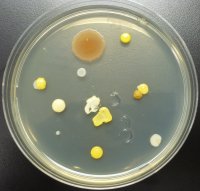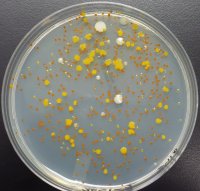The Role Of Yeasts In The Society.
Since ancient times, yeast species like Saccharomyces cerevisiae has been used in baking and fermenting alcoholic beverages for thousands of years. Many types of yeasts are used in the food industry: Baker’s yeast in bread production, brewer’s yeast in beer fermentation and yeast in wine fermentation. Yeasts are also one of the most widely used model organisms for genetics and cell biology. While some have beneficial uses, others like Candida albicans have been found to be opportunistic pathogens. Recently, yeasts have generated a lot of interest in the biofuel industry.
The Ecology Of Yeasts.
Yeasts are ubiquitous in our environment and also live as normal flora of our skin but are most frequently isolated from sugar-rich environments. Some good examples include fruits and berries (such as grapes, apples or peaches), and exudates from plants (such as plant saps or cacti). Some yeast species are found in association with soil and insects. They are very commonly isolated in clinical laboratories.
Yeast In Relation To Indoor Air
When we sample indoor air for monitoring quality, the reports frequently mention the presence of yeasts in air samples either from homes or workplaces.
However, they are not reported to the generic level, as this is a time-consuming process involving a range of biochemical and physiological tests. Hence, it is only the enumeration which is taken into account for the purpose of investigation of indoor air quality. Consequently, many reports present only total viable counts sometimes; sub-dividing them according to the color of the yeast colony, as for instance, “pink yeast” or “white yeast.”
Some common indoor air yeasts are Rhodotorula sp., Candida sp. and Geotrichum sp. These have been found to be abundant in house dust, dust from mattress and floors and also home cold-mist vaporizers. They thrive in moist and damp environments.
What Does The Presence Of Yeast Signify?
High yeasts counts in air samples suggest damp and humid conditions. A high occupation density, human and dust raising activities elevate yeast counts. These may not be very important for normal healthy individuals, but for immuno-compressed people or those who have received prolonged exposure to such high yeast counts, health effects may be of some concern. In workplaces like bakeries, breweries and distilleries, where yeast is one of the major raw materials used, workers experience some health issues. In such environments, yeasts produce allergenic compounds. As for instance, Baker’s Asthma is caused by Saccharomyces cerevisae which produces the enzyme Enolase – a potent allergen. Candidiasis is another most common oral and vaginal yeast infection seen in humans. In the past, it has been known to surpass the bacterium E.coli for causing hospital-related infections. Cryptococcosis, caused by Cryptococcus is another yeast-related subacute infection of the central nervous system.Yeasts are considered as opportunistic pathogens i.e. causing disease in patients with:
- a breakdown in immune system
- on prolonged treatment with antibiotics, steroids or other drugs
- intravascular catheters
- with diabetes mellitus
- intravenous drug abusers.
Conclusion
Although, yeasts have not been thoroughly studied with respect to indoor air levels, the elevated levels in air samples could be a cause of concern to weak individuals and suggest requirement for some corrective measures.
References
- Brian Flannigan, Robert A. Samson and J. David Miller. 2001. Microorganisms in Home and Indoor Work Environments. Diversity, Health Impact, Investigation and Control. CRC Press. London and New York.
- Davise H.Larone.2002. Medically Important Fungi. ASM Press. Washington, DC.
- Deanna A. Sutton, Annette W. Fothergill, Michael G.Rinaldi. 1998. Guide to Clinically Significant Fungi. Williams and Wilkins. Maryland, USA.


